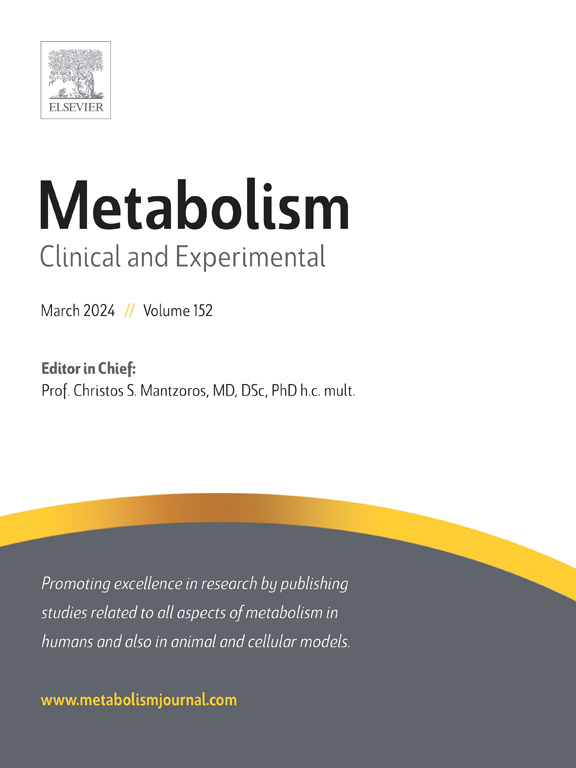甲状旁腺功能减退症的诊断和治疗的最佳实践建议。
IF 11.9
1区 医学
Q1 ENDOCRINOLOGY & METABOLISM
引用次数: 0
摘要
背景:甲状旁腺功能减退症(HypoPT)的特点是由于甲状旁腺激素(PTH)不足导致血清钙水平降低。本文建立在2022年国际HypoPT指南和三篇系统综述的基础上,这些综述通过更新的叙述性综述和专家共识得到了进一步的信息。本文提出了目前诊断和管理HypoPT的最佳实践共识建议。方法:一个国际专家小组更新了以前的系统评价(SR),进行了叙述性评价,制定并随后在2024年5月(美国波士顿)举行的内分泌学会前会议甲状旁腺峰会上批准了这些最佳实践建议。结果:慢性HypoPT的诊断标准需要低钙伴甲状旁腺激素异常或低水平。常规治疗建议作为一线治疗,包括补钙、活性维生素D、纠正维生素D不足和纠正血清镁异常。监测是必要的,以达到最佳的血清钙,同时避免高磷血症,高钙尿症和肾功能下降。需要对HypoPT并发症进行评估,包括对绝经后妇女和年龄在50岁 以上的男性进行骨骼健康评估。提供了在妊娠和哺乳期以及儿童中管理HypoPT的具体策略。用palopegteriparatide替代PTH已被批准,是一种重要的治疗选择,特别是当常规治疗不足或不能耐受时。结论:这些最佳实践建议为HypoPT的诊断和管理提供了一个框架,强调个性化护理,DNA分析在非手术HypoPT诊断中的作用,以及PTH或PTH类似物治疗的作用。它们补充了2022年国际指南,并纳入了过去3 年更新的治疗建议,包括基于最近临床试验数据和专家共识的新批准的分子palopegteriparatide的定位。本文章由计算机程序翻译,如有差异,请以英文原文为准。

Best practice recommendations for the diagnosis and management of hypoparathyroidism
Background
Hypoparathyroidism (HypoPT) is characterized by low serum calcium due to insufficient parathyroid hormone (PTH). This manuscript builds upon the 2022 international HypoPT guidelines and three systematic reviews, which have been further informed by updated narrative reviews and expert consensus. This paper presents current best practice consensus recommendations for the diagnosis and management of HypoPT.
Methods
An International Panel of Experts updated the previous systematic reviews (SR's), conducted narrative reviews, developed, and subsequently approved these best practice recommendations at the Parathyroid Summit, held as a pre-Endocrine Society meeting in May 2024 (Boston, USA).
Results
Diagnostic criteria for chronic HypoPT require hypocalcemia with inappropriately normal or low PTH levels. Conventional therapy is recommended as first line therapy and includes calcium supplementation, active vitamin D, correction of vitamin D inadequacy and correction of abnormalities in serum magnesium. Monitoring is required to achieve optimal serum calcium while avoiding hyperphosphatemia, hypercalciuria and declines in renal function. Assessment of HypoPT complications is required including skeletal health assessment in postmenopausal women and men over the age of 50 years. Specific strategies are provided for managing HypoPT during pregnancy and lactation as well as in children. PTH replacement with palopegteriparatide has been approved and is an important therapeutic option, especially when conventional therapy is inadequate or not tolerated.
Conclusion
These best practice recommendations provide a framework for HypoPT diagnosis and management, emphasizing individualized care, role of DNA analysis in the diagnosis of nonsurgical HypoPT, and role of PTH or PTH analogue therapy as appropriate. They complement the 2022 international guidelines and incorporate updated therapeutic recommendations from the past 3 years including the positioning of the newly approved molecule palopegteriparatide based on recent clinical trial data and expert consensus.
求助全文
通过发布文献求助,成功后即可免费获取论文全文。
去求助
来源期刊

Metabolism: clinical and experimental
医学-内分泌学与代谢
CiteScore
18.90
自引率
3.10%
发文量
310
审稿时长
16 days
期刊介绍:
Metabolism upholds research excellence by disseminating high-quality original research, reviews, editorials, and commentaries covering all facets of human metabolism.
Consideration for publication in Metabolism extends to studies in humans, animal, and cellular models, with a particular emphasis on work demonstrating strong translational potential.
The journal addresses a range of topics, including:
- Energy Expenditure and Obesity
- Metabolic Syndrome, Prediabetes, and Diabetes
- Nutrition, Exercise, and the Environment
- Genetics and Genomics, Proteomics, and Metabolomics
- Carbohydrate, Lipid, and Protein Metabolism
- Endocrinology and Hypertension
- Mineral and Bone Metabolism
- Cardiovascular Diseases and Malignancies
- Inflammation in metabolism and immunometabolism
 求助内容:
求助内容: 应助结果提醒方式:
应助结果提醒方式:


